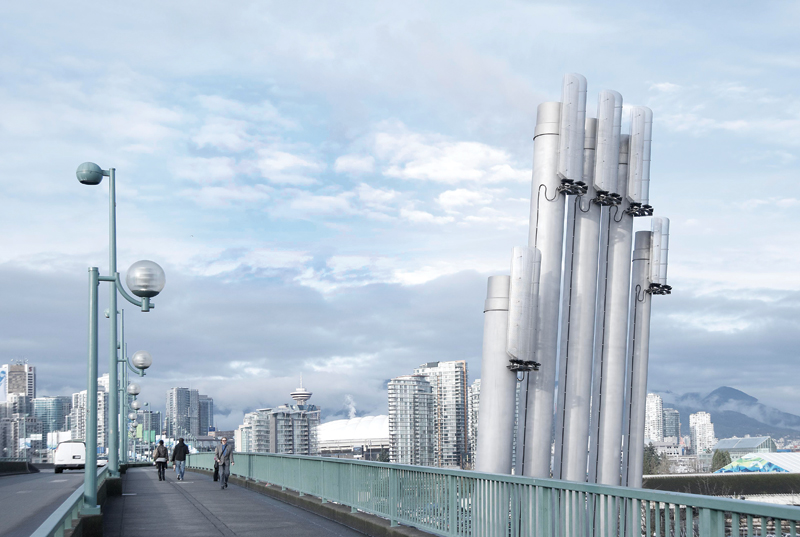Water makes a significant contribution to Canada’s electricity needs. But the water-energy story is more complicated than the provision of hydropower. At the community level, for instance, where more than 50 per cent of the country’s energy is consumed, it takes vast amounts of energy to treat and pump water.
Here, water plays more the role of an energy villain than a hero. The good news, however, is communities are starting to transform water into one of their most prized energy assets.

Of the many services water offers in our communities, its primary service is as potable water for public consumption. This is a service that, in Canada’s expanding and densifying communities, requires a significant amount of energy. In fact, the full provision of this service—including water treatment, conveyance, and subsequent wastewater treatment—draws on 30 to 50 per cent of municipal electricity budgets in Canada on average, according to a Power Application Group study from 2008.
Communities can reduce the amount of energy they uses for water services in many ways. The most comprehensive is through integrated demand and supply management, which with the help of water mapping (see “Off the Charts,” July/August 2013), can expose the energy-water link in a community and mitigate increases in energy demand through better integration of water infrastructure, land-use planning, buildings, and population characteristics.
To elevate water to true energy hero status, however, requires communities to think of water infrastructure and resources as opportunities rather than energy drains. Understanding energy use, need, and options; and taking a systems approach to energy in the context of community services such as water, buildings, land use, transportation and waste, we can create smart energy communities that turn energy waste into budding energy opportunities.
Harness and store
The most conventional opportunity is small-scale hydropower. Wherever water flows, there’s an opportunity to harness kinetic energy and convert it to electrical energy. Many communities are already engaged in small-scale projects. Since 1962, BC Hydro has helped the small, isolated community of Bella Coola reduce its dependence on diesel for electricity, first by installing a run-of-river hydroelectric system, which has lower environmental impact than larger, more conventional systems because it doesn’t require water storage in a headpond. More recently, Bella Coola has installed a hydrogen fuel cell storage system, which increases the hydroelectric system’s usable energy.
Cool down, hot stuff
Electricity is not the only valuable form of energy. In fact, 60 per cent of energy demand in Canada is for thermal energy—in other words, heating and cooling. Here, also, smart energy communities can find an incredible opportunity in water.
A popular example is Enwave’s Deep Lake Water Cooling System in Toronto, which uses a cooling loop to capture the thermal energy of Lake Ontario and distribute it for air conditioning to 40 high-rise buildings and facilities in Toronto’s downtown core. It also has three steam-generating plants. In the newer, northern part of the system, steam is returned in the form of condensate. Currently, the company has about 28 kilometres (km) of steam piping and 10 km of condensate return piping with plans to double the latter within the next few years.
Halifax Regional Municipality does something similar at its Alderney 5 government complex. The geothermal, seasonal cold-energy storage application eliminates the need for cooling systems by harvesting cold energy from seawater during winter months to chill an underground rock mass, and then using the stored thermal energy to meet air-conditioning needs in warming months.
Full steam ahead
Smart energy communities also consider embedded energy in water and wastewater infrastructure. The City of Vancouver’s Southeast False Creek Neighbourhood Energy Utility (NEU) captures the heat that is a natural by-product of the City’s wastewater treatment processes and distributes it through a district energy system for space and water heating for up to 17,000 homes and businesses.
And, if you ever find yourself warm and comfortable on a winter’s day in a municipal building in the City of Barrie, Ontario, you are likely benefitting from this innovative energy service that water can provide. In a similar fashion to the system in Vancouver, Barrie’s system captures the waste heat from its wastewater treatment plant and uses it to heat adjacent buildings. The city may go one step further—it is considering capturing wastewater biogas and using it as another source of heat.
These solutions are a few of many. Increasingly, communities are exploring opportunities to make the most of their resources and harness energy from water infrastructure and resources.
Becoming a smart energy community means taking advantage of a whole slate of integrated energy solutions. With rising energy costs and an increasing need to improve energy efficiency and reduce greenhouse gas emissions, innovating where water and energy meet is an obvious start. WC
Brent Gilmour is the executive director at QUEST – Quality Urban Energy Systems of Tomorrow and Eric Campbell is manager of communications and engagement.











